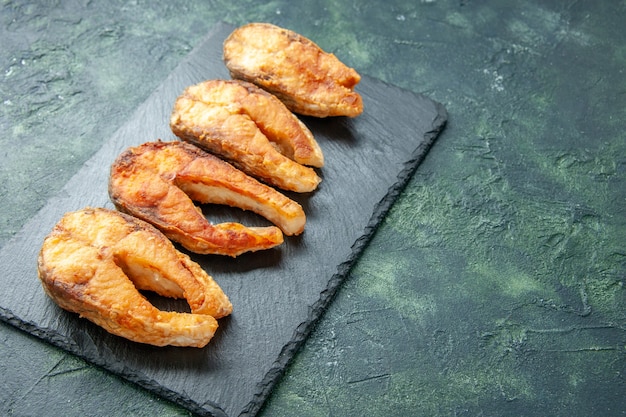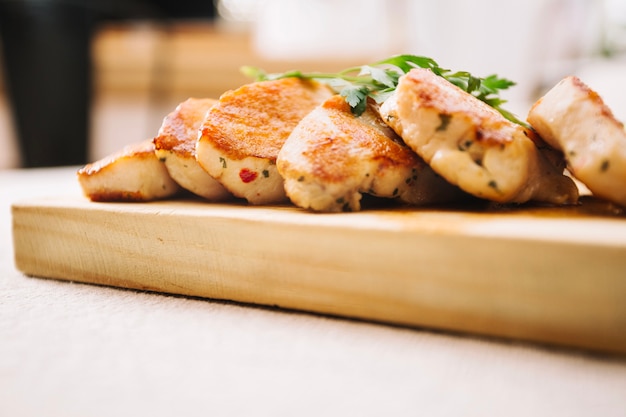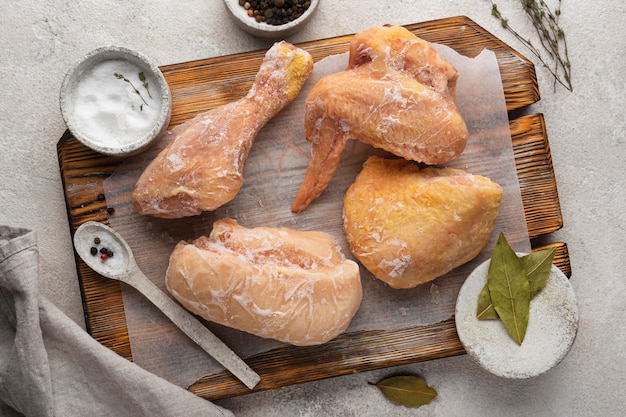Let's be honest, chicken breasts are a kitchen hero. They're versatile, affordable, and a great source of protein. Whether you're whipping up a quick weeknight dinner or planning a fancy feast, chicken breasts are always a safe bet. But, getting them cooked perfectly can feel like a culinary tightrope walk. You don't want dry, rubbery chicken, and you definitely don't want it undercooked.
Fear not, my fellow cooks! This guide is your comprehensive roadmap to mastering boneless chicken breast cooking times. We'll cover everything from choosing the right cut to understanding different cooking methods, and we'll even tackle some common mistakes that can leave you with less-than-stellar results. Get ready to become a chicken-cooking champion!
Part 1: Decoding the Chicken Breast

Before we dive into the specifics of cooking times, let's get familiar with the chicken itself. Understanding the anatomy of a boneless, skinless chicken breast is like knowing your tools before starting a project - it helps you make the right choices for your recipe.
1.1 The Chicken Breast Family
Think of the chicken breast as having a family tree, with different members suited for specific culinary adventures.
- whole chicken Breast: This is the whole shebang, the entire muscle with the bone still intact. It's typically larger and thicker, perfect for roasting and creating a stunning centerpiece for a meal.
- Boneless, Skinless Chicken Breast: This is the most popular choice for everyday cooking, and what we'll be focusing on in this guide. It's already trimmed and prepped, making it super convenient and ready for action.
- Chicken Breast Tenderloins: These are smaller and more tender pieces, often found in packages of two. They're great for quick meals and are less prone to drying out, making them ideal for stir-fries, salads, or even as a quick snack.
1.2 Picking the perfect chicken Breast
Choosing the right chicken breast can be the difference between a delicious meal and a culinary disappointment. Here's how to pick a winner:
- Size and Thickness: If you're grilling or pan-frying, opt for thinner breasts. They'll cook faster and be less prone to drying out. For roasting or baking, thicker breasts work better. They hold their shape well and allow for more even cooking.
- Doneness: Remember, thicker breasts take longer to cook through, so be mindful of that when choosing your chicken and adjusting cooking times.
- Appearance: Look for a chicken breast that's firm to the touch, not overly soft, with a pale, even colour. Avoid any signs of discoloration or bruising, and make sure the packaging is intact.
Part 2: Temperature: The Ultimate Gauge

Alright, let's get into the heart of the matter. The golden rule for cooking chicken is to ensure it reaches an internal temperature of 165°F (74°C). This guarantees that the chicken is cooked through and safe to eat.
2.1 The meat thermometer: Your Culinary BFF
Think of a meat thermometer as your best friend in the kitchen. It's the most accurate and reliable way to tell if your chicken is cooked through. Don't rely on guessing - use the thermometer, it's worth the investment.
To use a meat thermometer, insert the tip into the thickest part of the breast, avoiding the bone if there is one. The tip should be in the center of the muscle. Once the temperature hits 165°F (74°C), your chicken is ready to go!
2.2 Visual Cues: Hints of Doneness
While a thermometer is the ultimate judge, there are a few visual cues you can use to get a general sense of doneness. As your chicken cooks, the surface will turn white, and the juices will run clear. You can also gently press on the chicken - if it's firm and springy to the touch, it's likely done.
2.3 Resting: The Key to Juiciness
A crucial step, especially for thicker breasts, is letting the chicken rest for 5-10 minutes before carving. This allows the juices to redistribute, resulting in a more tender and juicy chicken. It's like giving it a little break after all that hard work!
Part 3: Cooking Methods: Exploring the Possibilities

Now, we're going to explore different methods for cooking your boneless chicken breasts. Each method has its own unique qualities and considerations when it comes to timing.
3.1 Pan-Frying: Quick and Delicious
Pan-frying is a quick and easy way to cook chicken breasts, perfect for weeknight meals when you need dinner on the table fast. Here's the gist:
- Preheat a skillet over medium-high heat. You want the pan nice and hot to create a crispy sear on your chicken.
- Season your chicken breasts. Salt and pepper are a classic combination, but feel free to get creative with herbs and spices.
- Add a bit of oil to the pan and let it heat up. Olive oil or vegetable oil are good choices.
- Cook for 3-4 minutes per side, or until golden brown and cooked through. Remember to check the internal temperature with your trusty thermometer.
Tip: If you're worried about your chicken sticking to the pan, try using a nonstick skillet. It makes life much easier!
3.2 Grilling: Bringing the Smoky Flavors
grilling chicken is a fantastic way to add some smoky flavor and create a delicious char. Here's what you need to know:
- Preheat your grill to medium-high heat. You want those grill marks to be bold and beautiful.
- Season your chicken breasts with your favourite grill rub or marinade. This is where you can really personalize your dish.
- Cook for 4-6 minutes per side, or until cooked through. Keep an eye on the grill to ensure your chicken doesn't burn.
Tip: For even more flavor, try marinating your chicken for at least 30 minutes before grilling.
3.3 Baking: Easy and Efficient
Baking is a great way to cook a larger batch of chicken breasts, and it's incredibly easy to do. No need for constant monitoring, just let the oven do its magic.
- Preheat your oven to 375°F (190°C).
- Place your chicken breasts on a baking sheet lined with parchment paper. This helps prevent sticking and makes cleanup a breeze.
- Season with your favourite spices and drizzle with a bit of olive oil. A little bit of oil helps the spices adhere to the chicken and creates a beautiful golden crust.
- Bake for 20-25 minutes, or until cooked through. Remember, thicker breasts will take longer, so adjust the cooking time accordingly.
Tip: To ensure even cooking, use a baking thermometer to check the internal temperature of the thickest part of the breast.
Part 4: Cooking Times: A Deeper Dive
Now, let's get into the specific cooking times for different chicken breast sizes. Remember, these are just guidelines, and it's always best to check the internal temperature with a meat thermometer to ensure it's cooked through.
4.1 Boneless, Skinless Chicken Breast: The Everyday Hero
This is the most common type of chicken breast, and it's relatively straightforward to cook. Here's a table with approximate cooking times for different sizes and cooking methods:
| Size | Pan-Frying | Grilling | Baking |
|---|---|---|---|
| Small (4-6 oz) | 3-4 minutes per side | 4-6 minutes per side | 15-20 minutes |
| Medium (6-8 oz) | 4-5 minutes per side | 6-8 minutes per side | 20-25 minutes |
| Large (8-10 oz) | 5-6 minutes per side | 8-10 minutes per side | 25-30 minutes |
4.2 Chicken Breast Tenderloins: The Quick and Tender Option
These smaller pieces cook much faster than whole breasts. Here's a quick breakdown:
- Pan-frying: 2-3 minutes per side
- Grilling: 3-4 minutes per side
- Baking: 10-15 minutes
Tip: Remember to check the internal temperature to make sure they're cooked through. You don't want any surprises!
Part 5: Common Chicken Breast Mistakes (and How to Avoid Them)
We all make mistakes in the kitchen, it's part of the journey! But when it comes to cooking chicken, some mistakes can be more serious than others. Let's take a look at some common pitfalls and how to avoid them:
5.1 Overcrowding the Pan: The Recipe for Uneven Cooking
If you're pan-frying or grilling, don't cram too many breasts into the pan or on the grill. This will lower the temperature and prevent your chicken from getting that nice, crispy sear. It can also lead to uneven cooking.
Solution: Cook your chicken in batches, giving each breast enough space to cook evenly. Patience is key!
5.2 Not Preheating: The Secret to a Delicious Sear
This is a classic mistake that can lead to uneven cooking. If your pan or grill isn't hot enough, your chicken will steam rather than sear. This can result in a bland, rubbery texture.
Solution: Always preheat your pan or grill to medium-high heat before adding your chicken. This ensures a nice sear and even cooking.
5.3 Not Letting the Chicken Rest: The Key to Juiciness
As mentioned before, letting the chicken rest after cooking is crucial for juicy results. If you cut into it right away, the juices will run out, leaving you with dry chicken.
Solution: Let your cooked chicken rest for 5-10 minutes before slicing or carving. This will allow the juices to redistribute, resulting in a much more tender and flavorful dish.
5.4 Overcooking: A Culinary Crime
Overcooked chicken is a crime against deliciousness. It's dry, tough, and frankly, unappealing. This usually happens when you don't check the internal temperature or use the right cooking time for your chicken.
Solution: Use a meat thermometer to check the internal temperature, and don't overcook. Your chicken will thank you for it.
5.5 Undercooking: A Serious Risk
This is the most serious mistake you can make when cooking chicken. undercooked chicken can carry harmful bacteria that can cause food poisoning. It's important to make sure your chicken is cooked through to an internal temperature of 165°F (74°C).
Solution: Use a meat thermometer to check the internal temperature. Don't be afraid to cook your chicken a little longer if you're unsure. It's better to be safe than sorry.
Part 6: chicken breast recipes: Inspiration Awaits
Now that you've got a handle on the basics of cooking boneless chicken breasts, let's talk about some recipe inspiration. There are so many ways to cook and flavor chicken, you're bound to find a dish that suits your taste.
6.1 Classic pan-fried chicken Breast: Simple and Delicious
This is a simple and straightforward recipe that's perfect for a quick weeknight meal.
- Season your chicken breasts with salt, pepper, and paprika. You can also add other herbs and spices like garlic powder, onion powder, or dried oregano.
- Heat a tablespoon of olive oil in a pan over medium-high heat.
- Cook the chicken for 3-4 minutes per side, or until cooked through. Remember to check the internal temperature.
- Serve with your favorite sides, such as roasted vegetables, mashed potatoes, or a simple salad.
6.2 grilled chicken with Lemon and Herbs: A Summery Delight
A summery and refreshing dish that's perfect for outdoor grilling.
- Marinate your chicken breasts in a mixture of lemon juice, olive oil, garlic, oregano, and thyme. Let them marinate for at least 30 minutes to allow the flavors to infuse.
- Preheat your grill to medium-high heat.
- Grill the chicken for 4-6 minutes per side, or until cooked through. Don't forget to check the internal temperature.
- Serve with a side salad and crusty bread. You can also squeeze a little more lemon juice over the chicken before serving.
6.3 Baked Chicken with Dijon Mustard and Rosemary: A Flavorful Classic
A simple but flavorful dish that's perfect for a crowd.
- Mix Dijon mustard, olive oil, rosemary, and salt and pepper together. You can add a pinch of garlic powder for extra flavor.
- Rub the mixture over your chicken breasts, making sure to coat them evenly.
- Bake in a preheated oven at 375°F (190°C) for 20-25 minutes, or until cooked through. Remember, thicker breasts will take longer.
- Serve with roasted vegetables or mashed potatoes. The Dijon mustard and rosemary create a beautiful flavor profile that pairs well with many sides.
Part 7: Chicken Breast Storage and Leftovers
Alright, let's talk about how to store your chicken and make the most of any leftovers. It's all about keeping things safe and tasty.
7.1 Storage Tips: Ensuring food safety
Storing raw chicken properly is crucial for food safety. Here's what you need to do:
- Refrigerate promptly: Keep raw chicken in the fridge at 40°F (4°C) or below. The sooner you get it in the fridge, the better.
- Store on a low shelf: Store raw chicken on a low shelf in your fridge to prevent any juices from dripping onto other food. This helps prevent cross-contamination.
- Wrap tightly: Wrap your raw chicken in plastic wrap or aluminum foil to prevent it from drying out. This also helps keep the flavor in.
- Don't let it sit out: Never let raw chicken sit out at room temperature for more than two hours. Bacteria can grow rapidly at room temperature, so it's important to refrigerate your chicken promptly.
7.2 Leftovers: A Culinary Treasure Trove
Got leftovers? You're in luck! Chicken is fantastic for reheating and using in other dishes.
- Refrigerate promptly: Refrigerate cooked chicken within two hours of cooking. This is crucial for food safety.
- Use within 3-4 days: Cooked chicken is safe to eat for 3-4 days in the fridge. After that, it's best to toss it out.
- Reheat thoroughly: Reheat cooked chicken to an internal temperature of 165°F (74°C) before eating. This ensures that any bacteria is killed.
7.3 Repurposing Leftover Chicken: Culinary Creativity
Here are a few ideas for what to do with your leftover chicken:
- chicken salad: Chop up your cooked chicken and add it to a classic chicken salad recipe. Delicious on sandwiches, crackers, or lettuce wraps.
- Chicken soup: Add leftover chicken to a hearty chicken soup. It adds protein and flavor.
- chicken tacos: Shred leftover chicken and use it in tacos with your favorite toppings. A quick and satisfying meal.
- Chicken stir-fry: Chop up your leftover chicken and toss it into a delicious stir-fry with your favorite vegetables. A great way to use up leftover chicken and create a tasty meal.
Part 8: FAQs: Answering Your Chicken Breast Queries
Now, let's tackle some frequently asked questions about cooking boneless chicken breasts. It's a topic that seems to spark endless curiosity.
8.1 How long should I cook a chicken breast in the oven?
It depends on the size of the breast. A small chicken breast (4-6 oz) will take about 15-20 minutes to cook in a preheated oven at 375°F (190°C). A medium breast (6-8 oz) will take about 20-25 minutes, and a large breast (8-10 oz) will take about 25-30 minutes. Always check the internal temperature with a meat thermometer to ensure it's cooked through.
8.2 What happens if I overcook a chicken breast?
Overcooked chicken becomes dry and tough. It can also lose flavor and become less appealing to eat. If you're worried about overcooking, it's best to err on the side of caution and check the internal temperature frequently.
8.3 How can I tell if a chicken breast is cooked through?
The best way to tell if a chicken breast is cooked through is to use a meat thermometer. It should reach an internal temperature of 165°F (74°C). You can also look for visual cues, such as a white surface and clear juices. If the chicken is firm and springy to the touch, it's likely cooked through.
8.4 Can I cook a chicken breast from frozen?
You can cook a chicken breast from frozen, but it will take longer and you may need to adjust the cooking time. It's best to thaw your chicken breast in the refrigerator overnight before cooking. If you're in a hurry, you can thaw it in cold water for about 30 minutes.
8.5 How long can I keep cooked chicken breast in the fridge?
Cooked chicken can be safely stored in the fridge for 3-4 days. Make sure it's properly refrigerated within two hours of cooking to prevent bacterial growth. You can reheat your cooked chicken in a pan, oven, or microwave until it reaches an internal temperature of 165°F (74°C).
Everyone is watching

Corn on the Cob: The Ultimate Guide to Perfectly Cooked Ears
Healthy MealsAh, corn on the cob. Just the name evokes images of sunny days, barbecues, and that sweet, juicy flavour that ...

Perfect Pork Roast Oven Cooking Time: A Guide to Delicious Results
Healthy MealsThere's something truly satisfying about a perfectly roasted pork. The aroma alone is enough to make your mout...

Scallops: The Ultimate Guide to Perfect Cooking
Healthy MealsAh, scallops. Those delicate, sweet, and utterly delicious morsels of the sea. They hold a special place in my...

Ham Cooking Time: How Long to Bake, Smoke, or Boil a Delicious Ham
Healthy MealsAh, ham. It's a classic, isn't it? A real crowd-pleaser, especially around holidays. And when done right, it'...

Spaghetti Squash: The Ultimate Guide to Cooking and Serving
Healthy MealsRemember that time you saw spaghetti squash at the supermarket, looking all bumpy and strange, and thought, "W...
